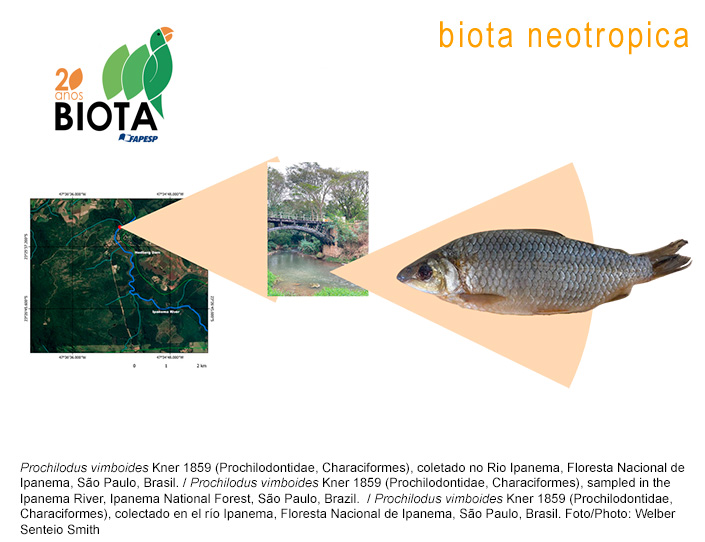Ichthyoplankton composition in an artificial reef complex on the north coast of Rio de Janeiro, Brazil
Abstract
Abstract This study provides an inventory of the assembly of fish eggs and larvae associated with an artificial reef complex, deployed in 1996 on the northern coast of Rio de Janeiro, considered one of the longest-studied areas globally. Sampling was conducted in 2022 at the end of the rainy season (April) and the end of the dry season (October) using a bongo net with mesh sizes of 330 and 500 μm, a diameter of 60 cm, and a length of 250 cm. A total of 2,844 specimens were sampled, representing 10 orders, 17 families, 9 genera, and 11 species. The species Micropogonias furnieri (Desmarest, 1823) showed the highest abundance, followed by family Engraulidae and the order Pleuronectiformes during the dry season. In the rainy season the family Engraulidae was the most abundant, followed by the species Stellifer rastrifer (Jordan, 1889) and unidentified larvae. We highlight the record of fish larvae from species of high commercial relevance (Macrodon ancylodon (Bloch & Schneider, 1801) and Micropogonias furnieri (Desmarest, 1823) for regional fishing, frequently caught off the northern coast of Rio de Janeiro. This emphasizes the importance of artificial reefs as possible reproductive areas for these species, acting as a link in the food chain and a source of income for the regional economy.Published
2025-01-01
How to Cite
Costa, I. D. da, Bonecker, A. C. T., & Zalmon, I. R. (2025). Ichthyoplankton composition in an artificial reef complex on the north coast of Rio de Janeiro, Brazil. Biota Neotropica, 25(2). Retrieved from //www.biotaneotropica.org.br/BN/article/view/2116
Issue
Section
Inventories
